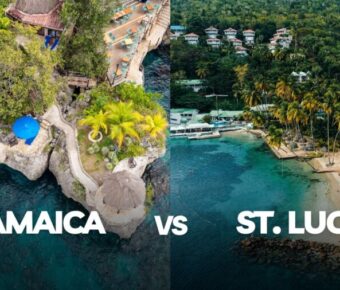Santorini vs Naxos: Which Greek Paradise Matches Your Travel Style in 2025
Choosing between Santorini and Naxos feels like picking between two stars in the Greek island crown. These stunning Cyclades destinations each shine with their own special light in the Aegean Sea.
Santorini brings dramatic caldera views and luxury experiences, while Naxos offers pristine beaches and authentic Greek charm at lower prices. Santorini’s white-washed villages and blue-domed churches create picture-perfect scenes, making it a top pick for romance and photography. Naxos keeps things more low-key with its farming villages, ancient ruins, and local food scene.
Both islands pack plenty of Greek culture and beauty into their shores. The choice comes down to what type of vacation speaks to you – Santorini’s upscale magic or Naxos’s laid-back warmth. Each place promises unforgettable memories in its own way.
Contents
- Geographical Overview and History
- Santorini’s Volcanic Landscape
- Naxos’s Mountainous Terrain
- Historical Significance of Both Islands
- Cultural Highlights
- Santorini’s Unique Traditions
- Naxos’s Rich Local Customs
- Culinary Delights and Specialties
- Notable Destinations and Attractions
- Must-Visit Sites in Santorini
- Key Attractions in Naxos
- Hidden Gems of the Cyclades
- Recreational Activities
- Water Sports and Beach Life
- Hiking and Nature Explorations
- Nightlife and Entertainment
- Travel Logistics
- Accommodation Options
- Transportation on the Islands
- Traveling Between Santorini and Naxos
- Comparative Analysis
- Comparing Costs of Visit
- Assessing the Travel Experience
- Family-Friendly Aspects
- Frequently Asked Questions
- What distinguishes the beaches of Naxos from those in Santorini?
- Can you compare the nightlife experiences between Naxos and Santorini?
- How does the cultural heritage of Naxos differ from that of Santorini?
- In terms of family-friendly activities, how do Naxos and Santorini differ?
- What are the differences in dining experiences between Santorini and Naxos?
- How do the overall costs of vacationing in Naxos compare to Santorini?
- More Travel Guides
Geographical Overview and History
Both Greek islands showcase distinct landscapes shaped by different natural forces. Santorini’s dramatic cliffs come from volcanic activity, while Naxos features rolling mountains and fertile valleys that made it a key ancient settlement.
Santorini’s Volcanic Landscape
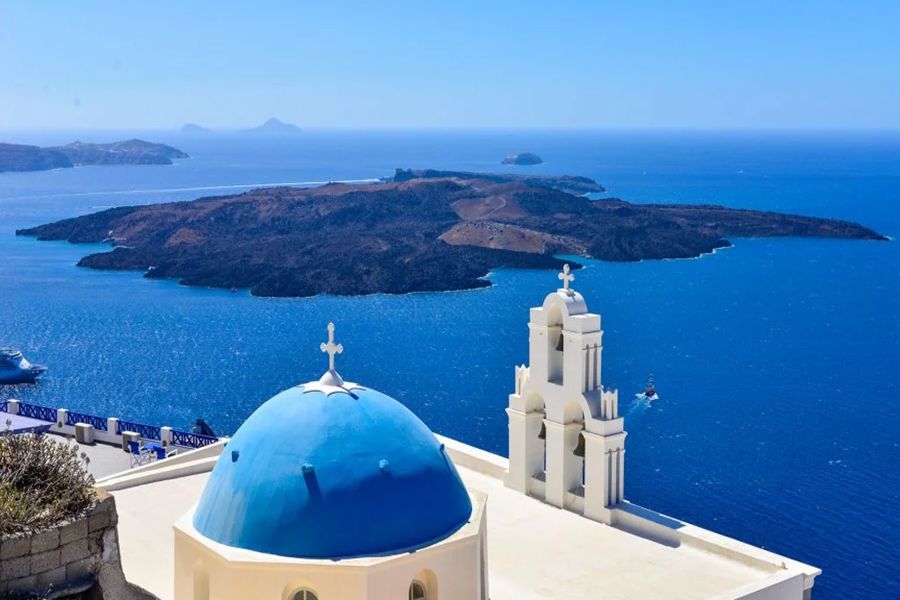
The island’s unique crescent shape formed from one of the largest volcanic eruptions in history around 1600 BCE. This created the stunning caldera – a massive crater now filled with blue sea waters.
The western cliffs rise 300 meters above the water, dotted with white buildings that seem to defy gravity. Black and red volcanic beaches line the eastern shores.
The volcano remains active today, with its center on the small island of Nea Kameni in the middle of the caldera. Steam still rises from vents, reminding visitors of the powerful forces that shaped this land.
Naxos’s Mountainous Terrain
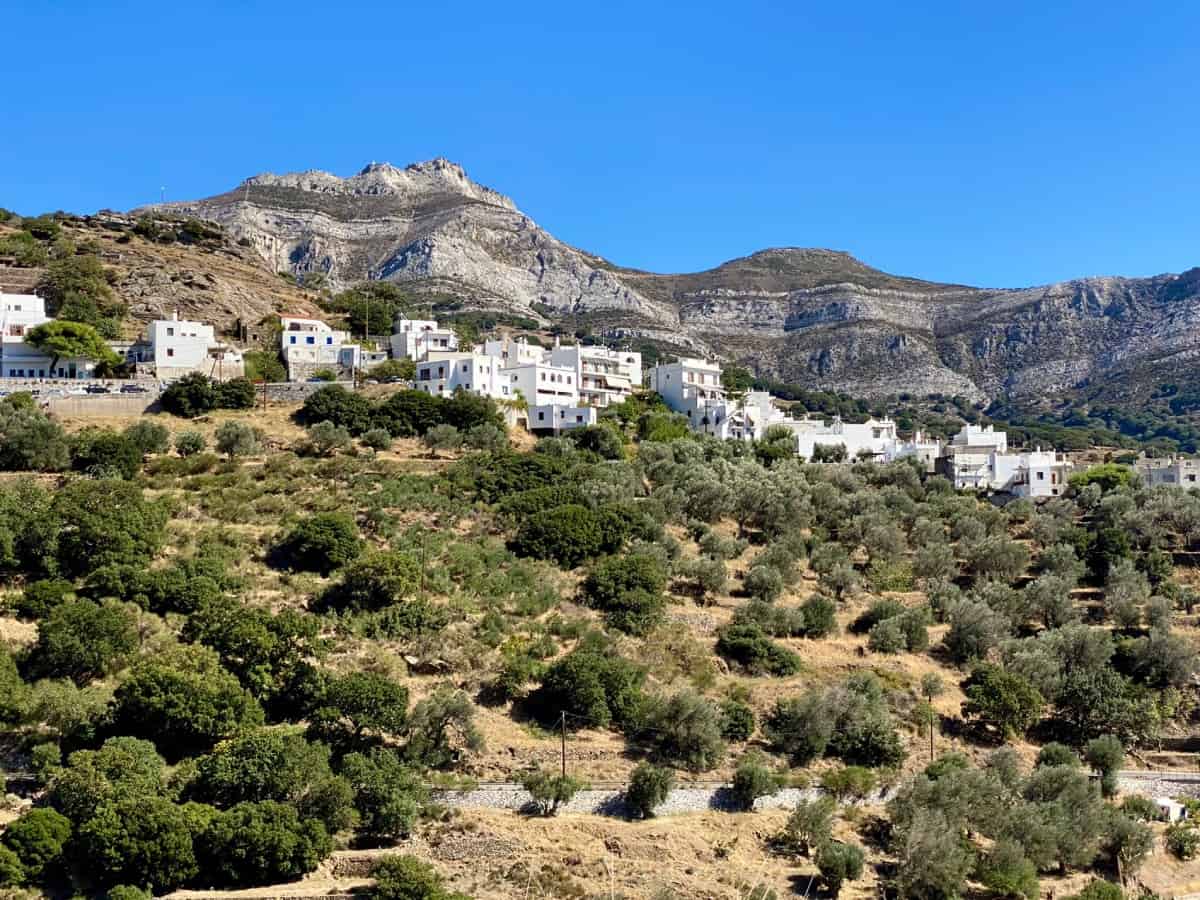
Mount Zas, the highest peak in the Cyclades at 1,004 meters, dominates the center of Naxos. Ancient myths say Zeus grew up in a cave on this mountain.
The fertile valleys between the mountains support farming and livestock. This agricultural wealth made Naxos powerful in ancient times.
Long golden beaches stretch along the western coast, protected from strong winds by the mountains. The eastern shore features smaller, rocky coves perfect for exploring.
Historical Significance of Both Islands
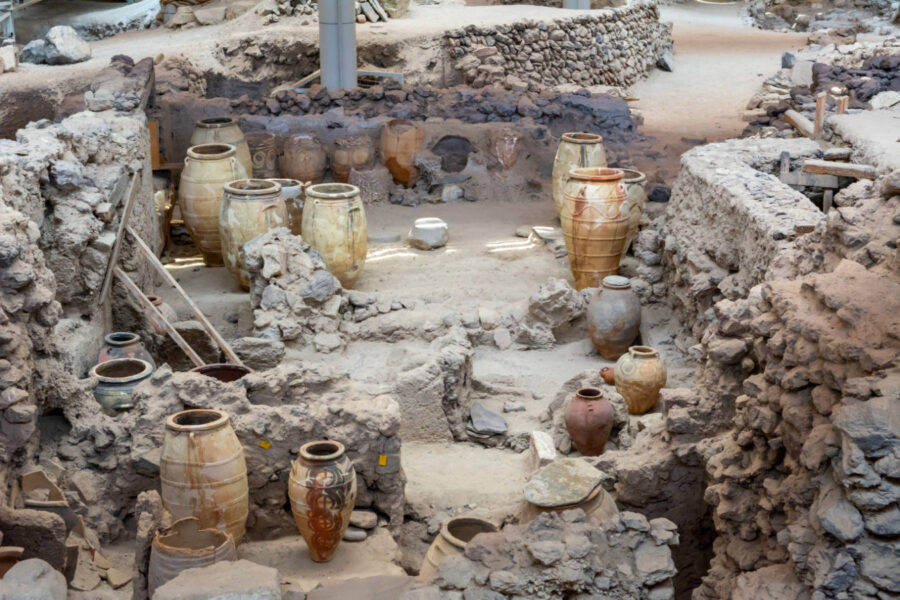
Naxos played a crucial role in early Greek civilization. The island’s marble quarries provided material for famous statues and buildings. Ancient temples still stand, including the massive Portara gateway from 530 BCE.
Santorini’s Akrotiri ruins reveal an advanced Minoan settlement buried by the volcanic eruption. The preserved buildings and artifacts show a thriving culture from 4,000 years ago.
Each island became important during different periods of Greek history. Naxos ruled maritime trade routes in the early Classical period, while Santorini’s strategic position made it valuable during medieval times.
Cultural Highlights
Both Santorini and Naxos offer distinct cultural experiences that reflect the unique character of each island through their traditions, customs, and local food scenes.
Santorini’s Unique Traditions

The island’s wine-making traditions stretch back thousands of years. Local vintners still use ancient techniques to produce the famous assyrtiko wine from grapes grown in volcanic soil.
Traditional festivals bring the streets to life throughout summer. The Ifestia Festival in August recreates the volcanic eruption with fireworks and music.
Local artisans keep basket-weaving and pottery-making alive in villages like Megalochori. Their workshops welcome visitors to watch them work and learn about these age-old crafts.
Naxos’s Rich Local Customs

Naxian villages maintain strong connections to their agricultural roots through harvest celebrations and folk dances. The potato harvest festival in September draws crowds to taste fresh naxian potatoes prepared in traditional ways.
Music plays a key role in island life. The sound of local violins and laoutos (lutes) fills village squares during summer festivities.
The production of kitron, a citrus liqueur found only on Naxos, follows centuries-old family recipes. Small distilleries offer tastings and demonstrations of the process.
Culinary Delights and Specialties

Santorini’s volcanic soil creates unique flavors in local ingredients like white eggplants, cherry tomatoes, and capers. Small family tavernas serve these in traditional dishes like fava (yellow split pea puree).
Naxos takes pride in its dairy products. Local shepherds make graviera cheese using methods passed down through generations. Fresh mizithra cheese appears in many traditional pastries.
Fish soup remains a specialty on both islands. Each family claims their own secret recipe, often featuring the day’s catch from local fishing boats.
Notable Destinations and Attractions
Both islands showcase incredible ancient ruins, stunning natural landscapes, and charming villages that capture the essence of Greek culture. These destinations offer unique experiences that make each island special in its own way.
Must-Visit Sites in Santorini
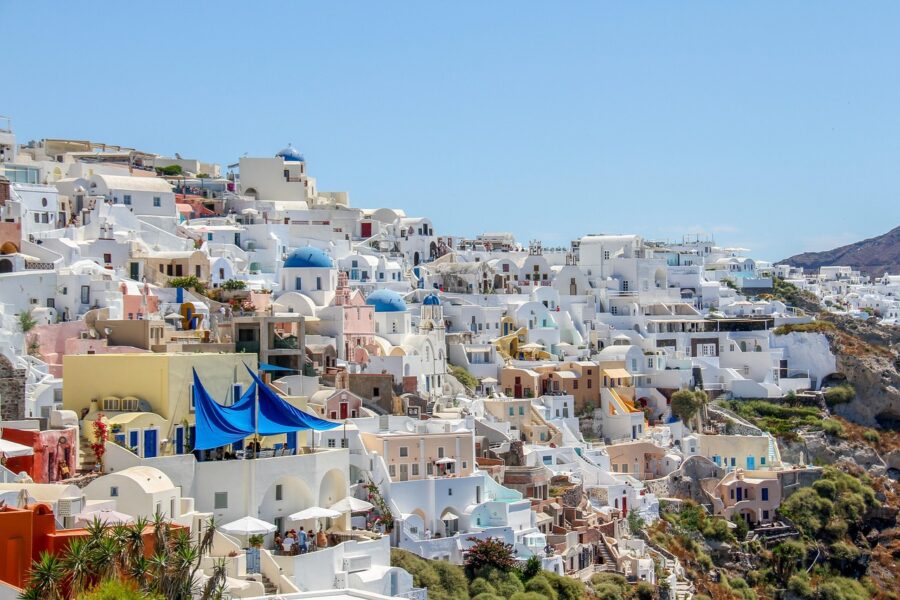
The picturesque village of Oia steals the show with its iconic blue-domed churches and white-washed buildings perched on cliffs. The narrow streets wind through traditional houses and lead to perfect sunset viewing spots.
The ancient ruins of Akrotiri tell fascinating stories of a Minoan settlement buried by volcanic ash. This prehistoric city has well-preserved frescoes and pottery that date back to 1627 BCE.
The Red Beach near Akrotiri offers a striking backdrop of red volcanic cliffs against the blue Aegean Sea. It’s one of the most photographed spots on the island.
Key Attractions in Naxos
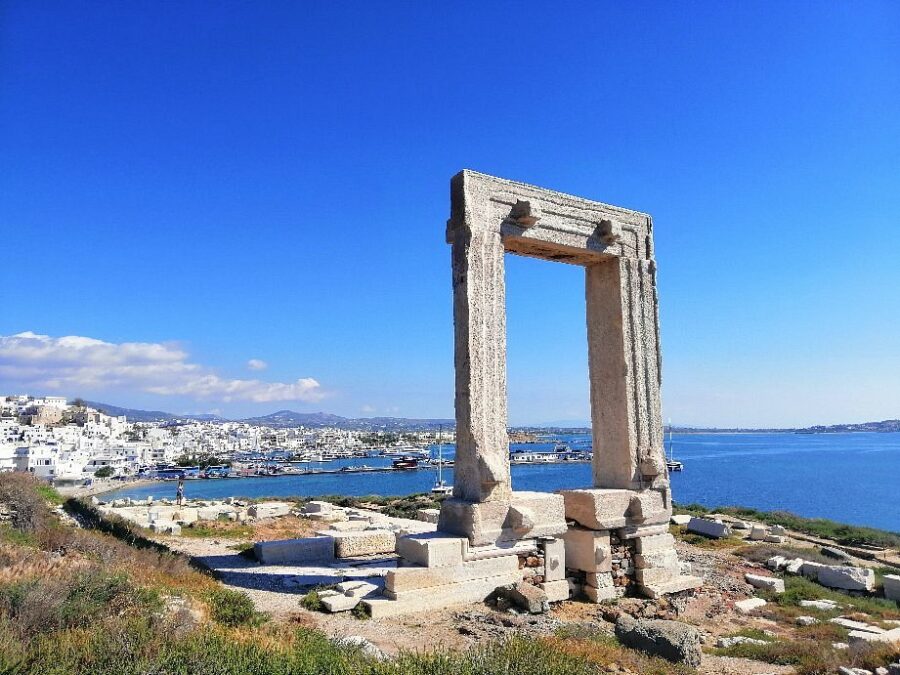
The Portara, a massive marble doorway, stands as the entrance to an unfinished temple of Apollo. Located on a tiny island connected to Naxos Town, it’s perfect for watching sunsets.
The medieval castle in Chora (Naxos Town) features Venetian architecture and houses small museums and art galleries. The surrounding streets form a maze of shops and tavernas.
St. George Beach sits right next to Naxos Town, offering shallow waters and gentle waves. The long stretch of golden sand makes it ideal for families with children.
Hidden Gems of the Cyclades
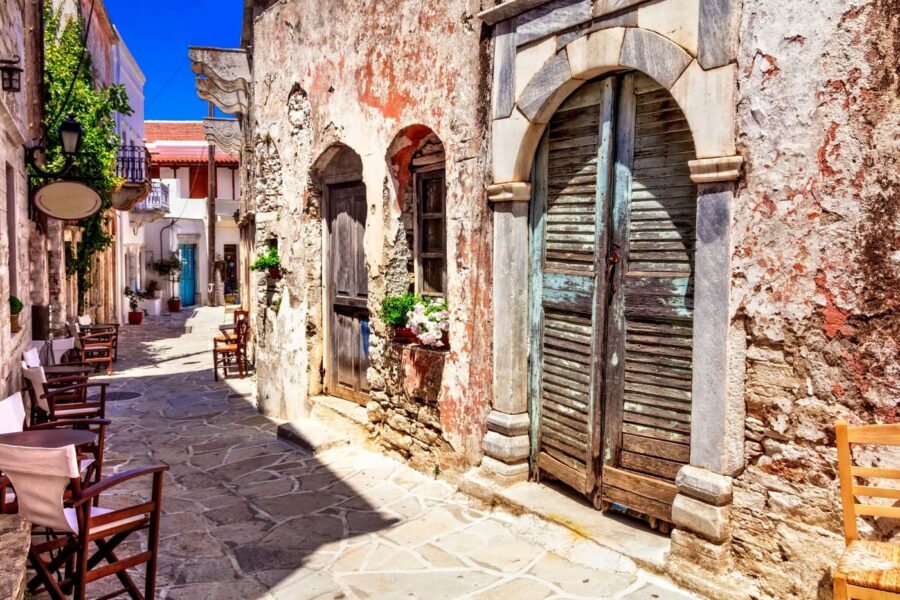
The mountain village of Halki in Naxos preserves traditional architecture and hosts local artisans. The village’s old distillery still produces kitron, a citrus liqueur unique to Naxos.
Ancient marble quarries high in Naxos’s mountains feature unfinished kouros statues left exactly where ancient sculptors abandoned them.
Santorini’s hidden gem, Megalochori, offers a peaceful escape from tourist crowds. This traditional village features beautiful bell towers and cave houses built into the volcanic rock.
Recreational Activities
Both islands offer amazing ways to stay active and have fun. Each destination has its own unique mix of water activities, outdoor adventures, and evening entertainment options.
Water Sports and Beach Life
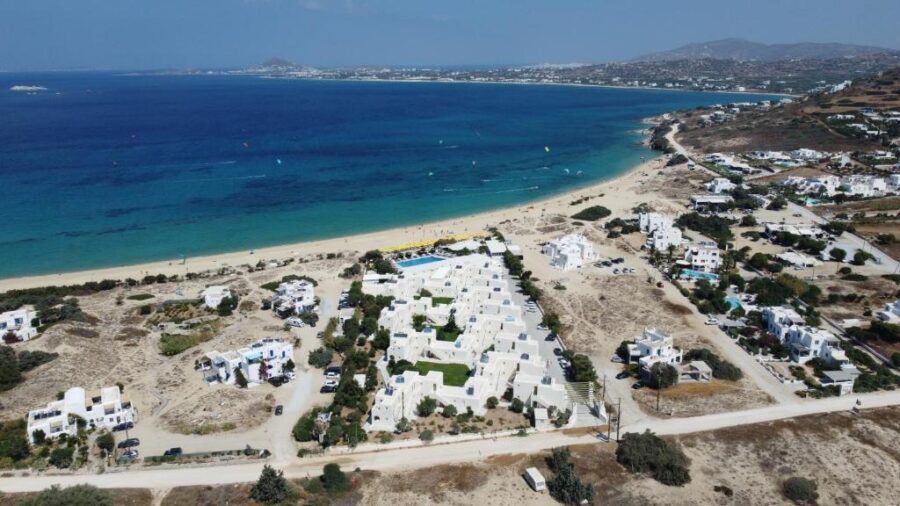
Naxos shines with its wide sandy beaches and perfect conditions for water sports. The strong winds at Mikri Vigla and Plaka beaches make them ideal spots for windsurfing and kitesurfing. Many beach activities and water sports centers offer equipment rentals and lessons.
Santorini’s volcanic beaches provide excellent snorkeling and diving opportunities. The clear waters around Perissa and Kamari beaches let swimmers explore underwater caves and sea life.
Beach clubs dot both islands’ coastlines. Naxos tends to be more laid-back, with casual beach bars serving drinks and snacks. Santorini’s beach scene is more upscale, featuring luxury loungers and oceanfront restaurants.
Hiking and Nature Explorations
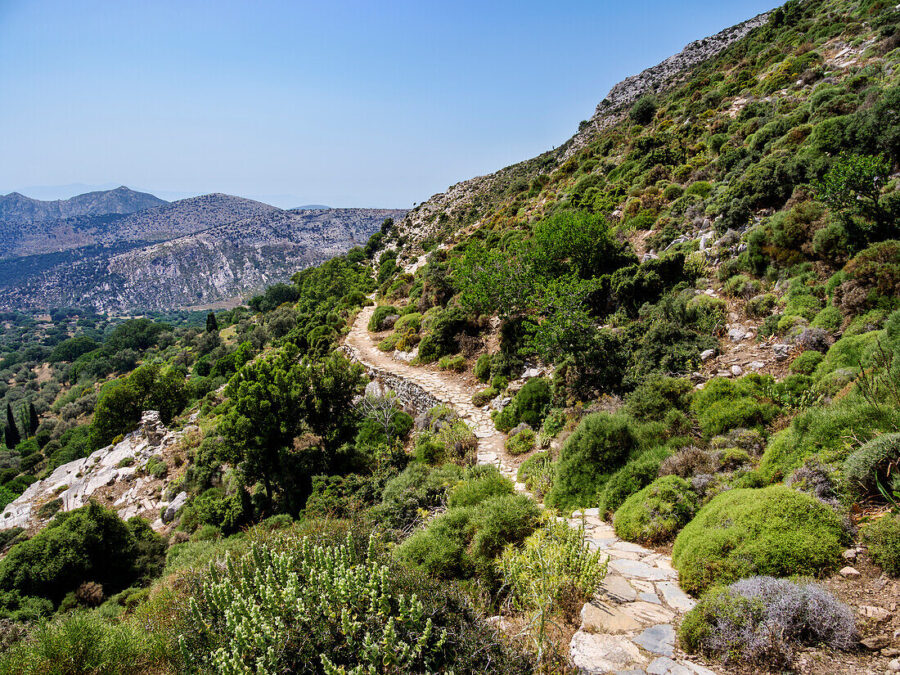
Naxos features marked hiking trails that wind through olive groves and traditional villages. The path to Mount Zeus, the highest peak in the Cyclades, rewards hikers with amazing views.
Santorini’s most popular hike runs between Fira and Oia along the caldera rim. The path offers stunning views of the volcano and Aegean Sea.
Both islands have ancient ruins to discover on foot. Naxos has the Temple of Demeter and various Venetian towers. Santorini features the ruins of Ancient Thera perched high on Mesa Vouno mountain.
Nightlife and Entertainment
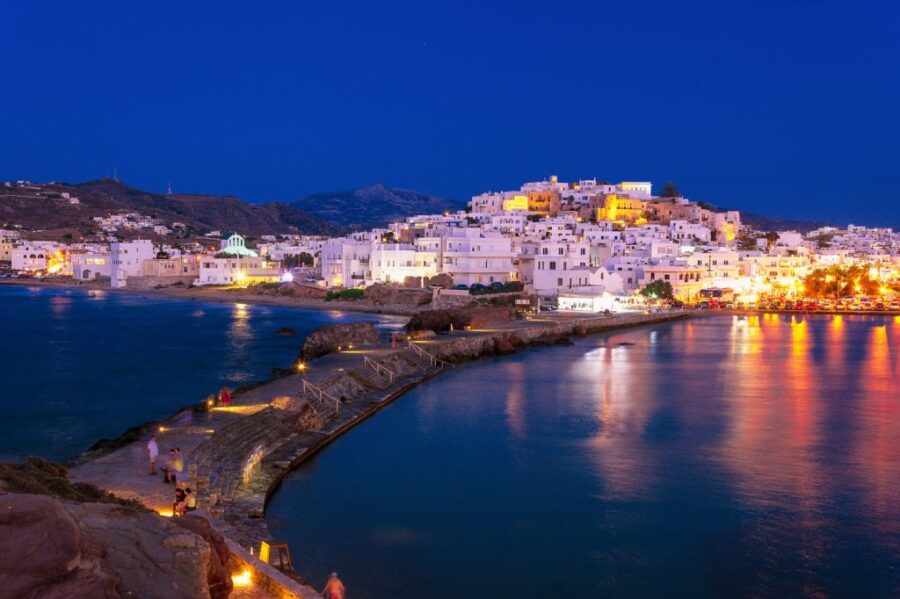
Santorini’s nightlife centers around Fira, with its mix of cocktail bars, dance clubs, and wine bars. Many venues offer sunset views over the caldera. The atmosphere tends to be sophisticated and romantic.
Naxos Town comes alive after dark with traditional tavernas and casual bars. Local musicians often perform Greek music in the narrow streets. The vibe is more relaxed and family-friendly.
Both islands host cultural events throughout summer. Naxos features folk music festivals and dance performances. Santorini draws crowds to its jazz nights and classical concerts in unique venues like wineries and ancient theaters.
Travel Logistics
Both Santorini and Naxos offer easy ways to get around and connect with other Greek islands. Each island has its own unique mix of places to stay and transport choices that fit different travel styles and budgets.
Accommodation Options
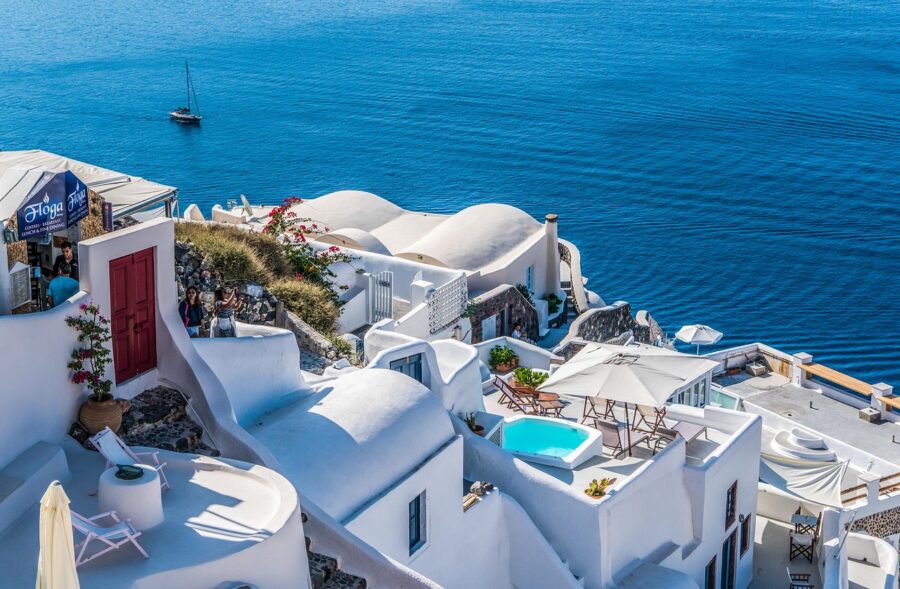
Santorini has many luxury hotels with caldera views and private pools. Most high-end stays are in Oia and Imerovigli. Check accommodation deals early, as the best spots fill up fast. Mid-range hotels spread across Fira and Firostefani.
Naxos gives better value for money. The island has plenty of family-run guesthouses and small hotels near St. George Beach. Chora, the main town, offers charming boutique hotels in restored buildings.
Beach hotels cost less in Naxos than Santorini. A room with a sea view in Naxos might be half the price of a similar room in Santorini.
Transportation on the Islands

Santorini’s local buses run between all major towns. The main bus station sits in Fira. Buses are cheap but can get crowded in peak season.
Renting an ATV or car makes sense for exploring Santorini’s hidden spots. Many visitors walk between Fira and Oia along the caldera path.
Naxos has good bus service to popular beaches and villages. The buses run often in summer months. The island’s bigger size means some visitors prefer to rent a car.
Taxis work well on both islands for short trips. Book them through your hotel or find them at marked stands.
Traveling Between Santorini and Naxos
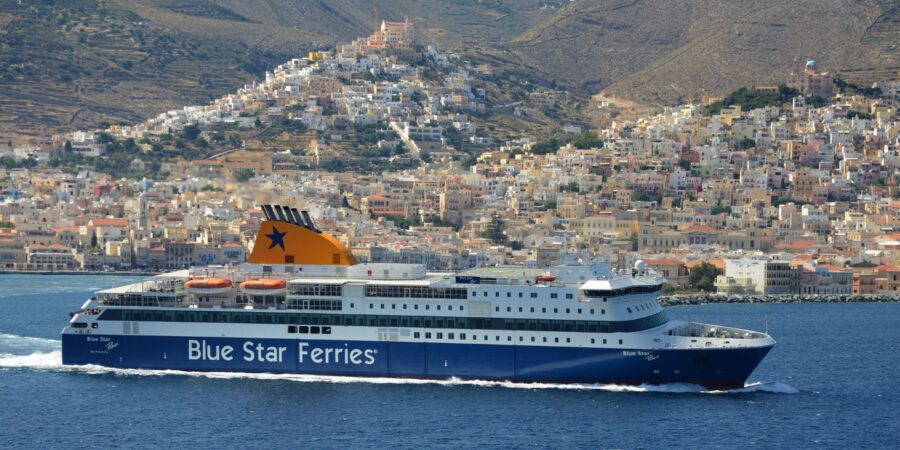
Fast ferries take about 2 hours between the islands. Slower boats need 3-4 hours. Book ferry tickets ahead in summer.
The Blue Star Ferry offers the most stable ride. It runs daily year-round. Several smaller companies add more choices in peak season.
Morning departures let travelers make the most of their day. Both islands have modern ports with good facilities.
Weather can affect ferry schedules in winter. It’s smart to build some flexibility into travel plans during off-season visits.
Comparative Analysis
Santorini and Naxos offer distinct experiences that appeal to different types of travelers. Santorini draws luxury seekers and honeymooners, while Naxos attracts families and budget-conscious visitors looking for authentic Greek experiences.
Comparing Costs of Visit
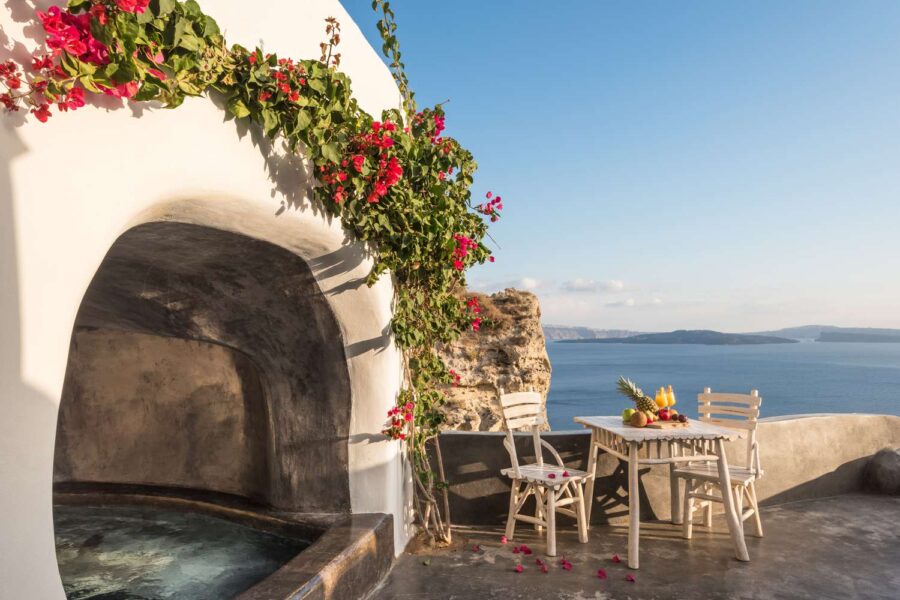
Naxos offers lower prices than Santorini across all categories. Hotels in Santorini start at $150 per night for basic rooms, while similar accommodations in Naxos cost $70-100.
A meal at a nice restaurant in Santorini costs about $50-70 per person. Naxos restaurants charge $30-40 for comparable meals. Local tavernas in Naxos offer authentic Greek dishes for $15-20.
Shopping costs less in Naxos too. Souvenirs and local products like olive oil sell for 30-40% less than in Santorini’s tourist shops.
Assessing the Travel Experience
Santorini excels in luxury amenities and dramatic views. The white-washed villages perched on cliffs create perfect photo opportunities. The island’s famous sunsets draw crowds to spots like Oia each evening.
Naxos provides a more laid-back atmosphere with fewer tourists. Its beaches stretch longer than Santorini’s and offer better swimming conditions. The water stays shallow for many meters out.
Getting around is easier in Naxos. The main town sits close to popular beaches and attractions. Santorini requires more planning to visit different areas due to its steep terrain and spread-out villages.
Family-Friendly Aspects
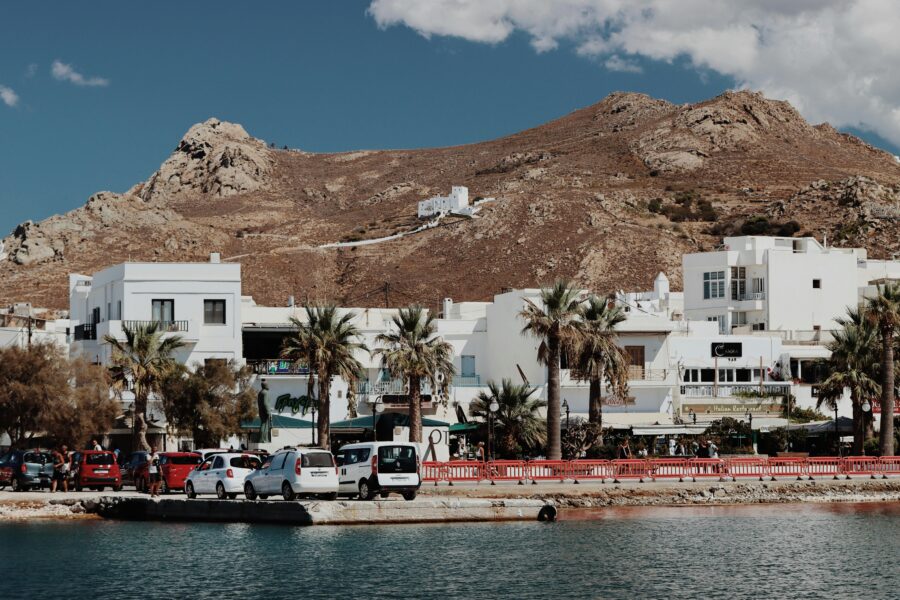
Naxos wins for families with children. The island’s gentle beaches let kids play safely in shallow waters. Many beaches provide umbrellas, chairs, and snack bars.
The island offers plenty of kid-friendly activities like water sports, horseback riding, and swimming. Most restaurants welcome children and provide high chairs.
Santorini’s steep steps and crowds make it tricky with strollers or young kids. The island focuses more on romantic experiences than family entertainment. Beach conditions can be rough for small children.
Frequently Asked Questions
Travelers considering these Greek islands want specific details about beaches, activities, culture, and costs. Each island offers distinct experiences that shape vacation memories in unique ways.
What distinguishes the beaches of Naxos from those in Santorini?
Naxos features long stretches of sandy beaches with shallow waters perfect for swimming. The west coast has miles of golden sand beaches like Agios Prokopios and Plaka.
Santorini’s beaches are more dramatic, with red and black volcanic sand. These beaches tend to be pebbly and the water gets deep quickly. The most famous spots are Red Beach and Perissa Beach.
Can you compare the nightlife experiences between Naxos and Santorini?
Santorini’s nightlife centers around sunset cocktail bars in Fira and Oia. The scene is sophisticated with wine bars and upscale lounges playing soft music.
Naxos offers a more casual nightlife focused in Naxos Town. Local tavernas host Greek music nights and there are a few beachfront bars perfect for relaxed evening drinks.
How does the cultural heritage of Naxos differ from that of Santorini?
Naxos maintains strong ties to ancient Greek mythology as the legendary home of Dionysus. The island features marble quarries, Byzantine churches, and traditional mountain villages.
Santorini’s culture revolves around its volcanic history. The ruins of Akrotiri showcase a Minoan settlement preserved by the great eruption of 1646 BC.
In terms of family-friendly activities, how do Naxos and Santorini differ?
Naxos excels at family activities with gentle beaches, water sports, and horseback riding. Kids can take windsurfing lessons or explore ancient ruins scattered across the island.
Santorini’s steep cliffs and crowded pathways make it less ideal for young children. The island better suits families with teens who can appreciate the views and historical sites.
What are the differences in dining experiences between Santorini and Naxos?
Santorini specializes in upscale restaurants with caldera views. Many establishments focus on modern Greek cuisine and wine pairings.
Naxos is known for traditional tavernas serving local specialties. The island produces its own cheese, potatoes, and citrus fruits used in authentic Greek dishes.
How do the overall costs of vacationing in Naxos compare to Santorini?
Naxos offers more budget-friendly accommodations, with rooms starting at €50 per night. Meals at local tavernas cost €15-25 per person.
Santorini commands premium prices, especially for caldera-view hotels that start at €200 per night. Dining costs average €50-100 per person at nicer restaurants.
